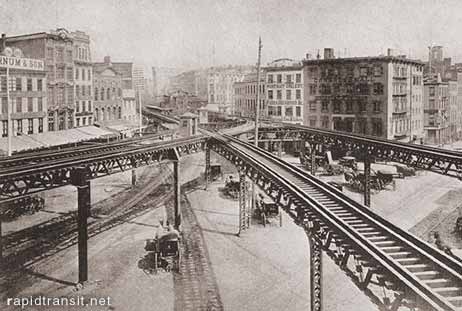
Page 7

The IRT operated two main rapid transit lines in Queens. An elevated line ran from Astoria through Long Island City to Queensboro Plaza. Another elevated line ran from Corona and Flushing to Queensboro Plaza. At Queensboro Plaza, these trains from Astoria or Flushing could go in two directions. Some traveled through a subway tunnel to Grand Central and Times Square. Other trains traveled over the Queensboro Bridge and then merged on to the Second Avenue elevated, on which they journeyed to Lower Manhattan. This latter route gave Queens denizens a one-seat ride – requiring no transfers – to Downtown Manhattan. Naturally, the Second Avenue el was popular among Queens commuters.
"The dispossessed thousands who used them for shopping or business have every right to expect the city to provide alternate service as promptly as possible."
Thus the editorial seemed to advocate for the el to remain until a replacement subway could be provided. But then the editorial reverses its original position, and embraces the financial reasons that the el should be condemned at Unification: Now the el was "uneconomical and inefficient" and "had to go sooner or later." By condemning the Second and Ninth Avenue els as private property the city would, "save about $11,000,000. It could not afford to sacrifice this sum for what would have been at best a temporary benefit to a particular section."
Although the editorial agreed that thousands of riders would lose their transportation line and be "dispossessed," it still found the economic incentives for demolishing the el to be motivating indeed. Improving the city's finances would be good for New York as a whole, while continuing to run the el would benefit only "a particular section" of the city.
At the expense of the city or not, the Second Avenue el did benefit particular local communities within the city, but in fact the community that most benefited from the el was not Second Avenue. Residents of Second Avenue had other transportation options, notably the Third Avenue el and a block away.
The Third Avenue line was overcrowded -- one rider complained in a letter to the editor of the New York Times of the "disgraceful, indecent and unhealthy overcrowding" on the Third Avenue el – but it did provide transportation along a route similar to that of the Second Avenue el.
The Queens Connection
The real beneficiaries of the Second Avenue el lived not on Second Avenue, but in Queens. In the 1930's, Queens had the least developed transit system of any of New York's boroughs, other than Staten Island.

For barely a year and a half, the 3rd Avenue El had Chatham Square to itself before the 2nd was built and opened on March 1, 1880. This photo faces uptown with the Third's line running up The Bowery. The branch to the left goes one station to City Hall while the line at lower right starts at South Ferry. The 2nd will soon be built up Division Street at middle right.
Updated
©2001 Alexander Nobler Cohen. ©2001 The Composing Stack Inc. All rights reserved